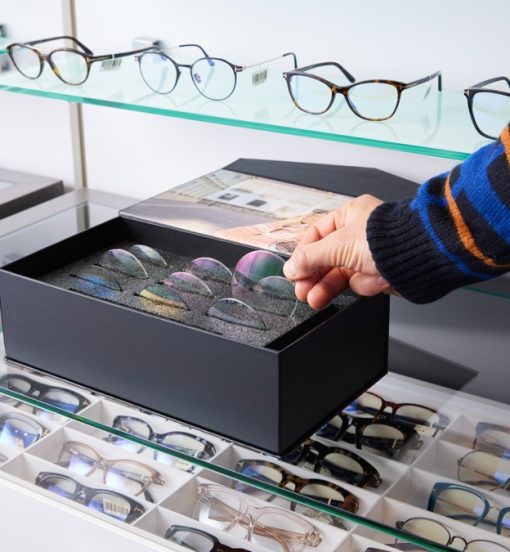
Data & Insights in Eyewear in North America: Part 2
Author: Dr. Alan Ulsifer
This month, FYinsights is sharing more data and insights relating to eyewear trends in North America, offering a closer look at consumer behaviour when it comes to choosing how often they purchase their eyewear – including contact lenses and sunglasses – and from where they’re purchasing it from. This article highlights key factors influencing these decisions, such as lifestyle needs, style preferences, budget, and the impact of insurance coverage. By understanding these trends, industry professionals can better anticipate shifts in consumer demand and tailor their strategies to meet evolving preferences in the eyewear market.
Glasses purchase cycle
To better understand the typical glasses purchase cycle, consumers were asked how much time has passed since their last eye exam and glasses purchase. The findings show that, on average, consumers wait 22 months between purchases, with the median being 15 months. The median offers a more stable reflection of consumer behaviour, as it is less influenced by outliers (very low or very high numbers compared to much of the data). Therefore, the median of 15 months provides a more reliable measure of typical consumer behaviour and purchasing habits.
This timing aligns with insurance benefits often allocated to vision care and eyewear, which can influence the frequency of purchases.

Source: The Vision Council
Of those without a purchase in the last 12 months…
The top three reasons given by respondents who wear glasses but didn’t purchase a new pair in the past year were: not needing new eyewear, trying to extend the lifespan of their current eyewear, and aiming to save money.

Source: The Vision Council
Of those who purchased contact lenses in the last three months…
Consumers are more likely to purchase contacts from a corporate location. However, it’s important to note that not all consumers are able to accurately distinguish between Corporate or Independent locations. This lack of understanding may affect the way consumers view the value, service, and pricing of products at these different types of locations, potentially skewing their preferences and shopping behaviors.

Source: The Vision Council
Of those who purchased contact lenses in the last three months…
Consumers who purchased from a corporate location expressed a relatively balanced preference when it came to the mode of purchase – near equally likely to buy either online or in-person. This data suggests that corporate retailers are successfully meeting the needs of a diverse consumer base, offering the convenience of online shopping while maintaining the value of in-store experiences. The dual-channel shopping behavior offers flexibility and gives consumers the ability to choose the shopping experience that best suits their needs.

Source: The Vision Council
Contact lens channel trends
The proportion of online consumers may be artificially lowered by respondents selecting “on the phone” who may be confusing purchasing contact lenses online using their mobile phone with calling a phone number to order contacts, especially as younger respondents were more likely to choose “on the phone”.
8% of those who purchased “on the phone” did so at independent locations compared to the 1% of purchases at corporate locations.

Source: The Vision Council
Plano sunglasses purchase cycle
Consumers were asked to estimate the number of months since their previous sunglasses purchase to better understand the typical purchase cycle. The findings revealed that the median was 10 months between purchases. This median figure indicates that the typical consumer refreshes their sunglasses more frequently than other eyewear types, possibly due to fashion trends, seasonal shifts, or the wear and tear that can occur with sunglasses.
The relatively short purchase cycle highlights the importance of staying attuned to evolving consumer preferences and the potential for frequent repeat purchases within this category.

Source: The Vision Council
In conclusion
At FYihealth group, we’re fortunate to have industry partnerships that offer us insights into this compelling data. We learn of key findings that can truly support the future of our profession. Our next issue will pull away from patient and consumer trends and will instead focus on your business – specifically, how to build a practice of high value.
